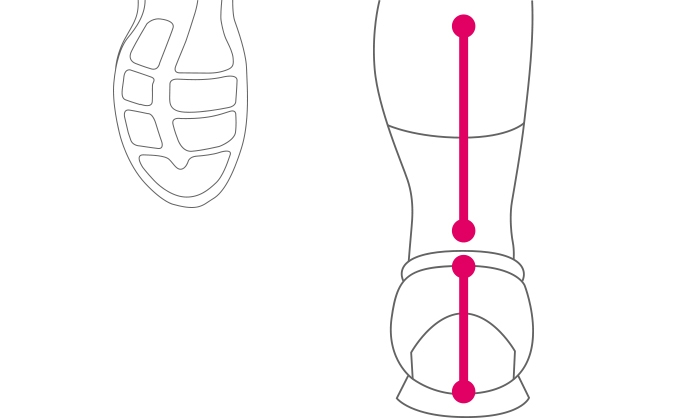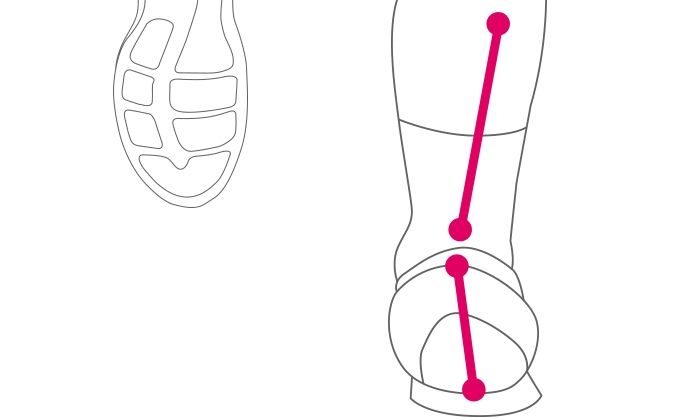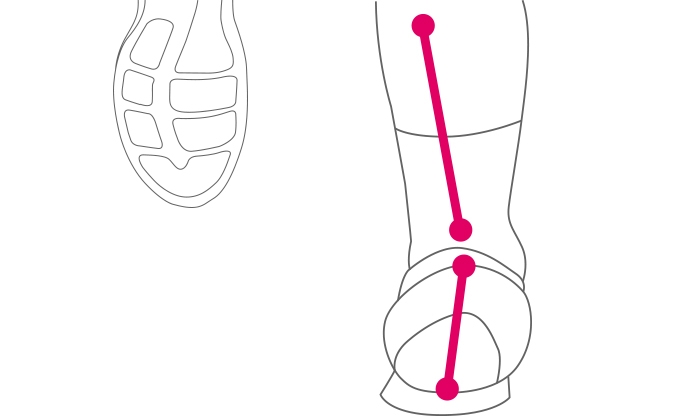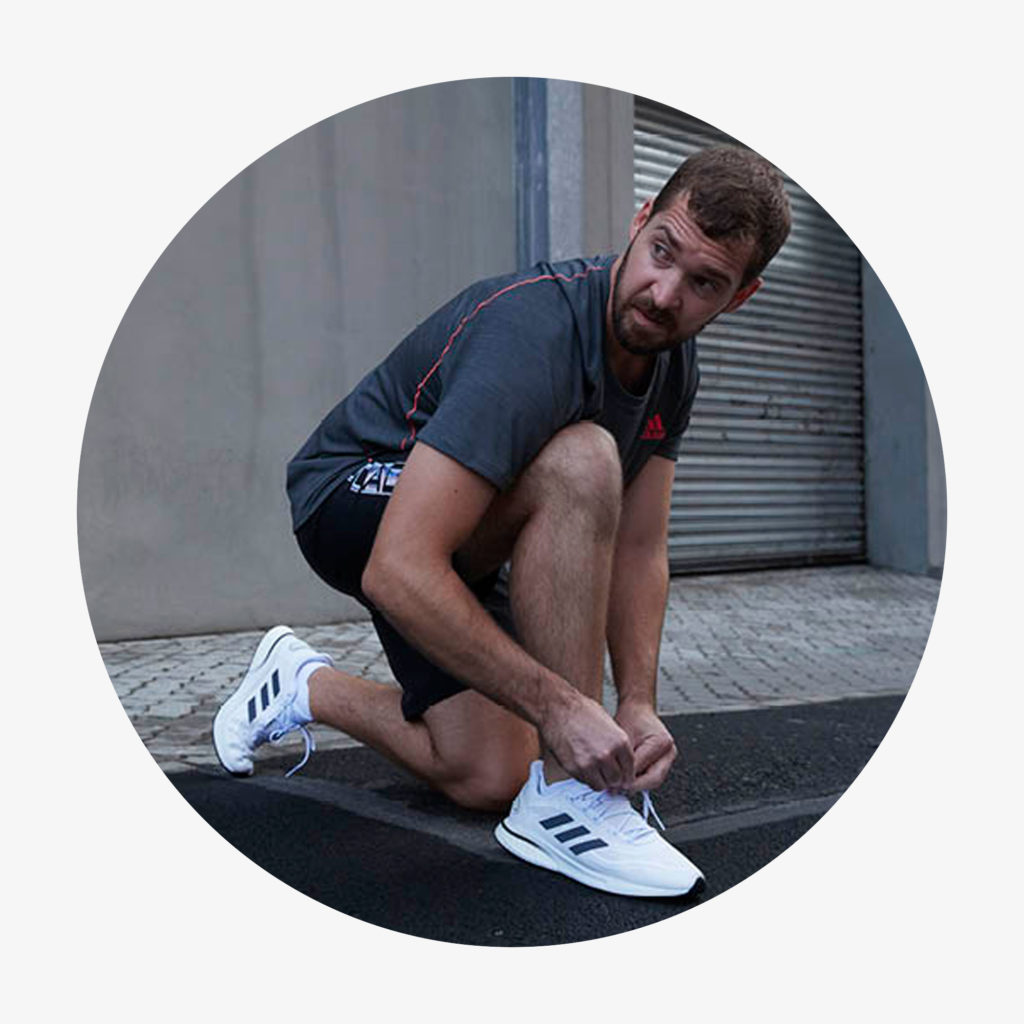THREE IMPORTANT CONCEPTS IN THE RUNNING WORLD
Pronation, overpronation and underpronation, as a runner these three expression have surely crossed your path. They play a key role in deciding which shoes are suitable for you. In this blog post we shed some light on what these three expression entail and how you can apply them when selecting running shoes. At the end of this post you’ll be a real running shoe expert!
Looking for new running shoes can be quite a job. As a beginner it might be hard to not lose sight of the forest due to all those damn trees. How are you going to find the right shoes when there literally are hundreds of different pairs? This can be overwhelming for any runner, but especially for those new to the scene; newbies are often not familiar with the terminology and don’t know what to look out for when purchasing a pair of trainers. Instead of focussing on which ones look the best, which running shoe is right for you really depends on your running style. But what exactly is pronation and how do you know if you’re a heavy or a light overpronator? In the following section you can read more about these three different running styles.

NEUTRAL PRONATION
The foot lands on the outside edge of the heel and then rolls inward to absorb and evenly distribute the impact of landing. The ankle stays straight above the heel. These are the hallmarks of a neutral runner who doesn’t need any additional support. This type of runner is – as the name suggests – optimally advised with neutral running shoes.

OVERPRONATION
The foot hits the outside edge of the heel and then rolls to the inside too much. This puts too much pressure on the inside of the foot and also makes the ankle collapse to the inside. These are the characteristics of an overpronating runner. This type of runner needs additional support on the inside of the foot. The level of support varies depending on the shoe. Stability shoes or shoes for overpronators are the right choice for overpronating runners.

UNDERPRONATION
Another name for underpronation is supination. When underpronating the foot lands on the outside of the heel and then rolls onto the outer edges of the foot. This puts a lot of pressure on the outside of the foot. Underpronation does not require additional support, but when underpronating we do recommend shoes with a high rotational stiffness. These type of shoes help reduce the risk of running on the outside of the shoe. The first choice for underpronators are neutral running shoes.
WHAT IS THE NEXT STEP?
As you have seen above, we can conclude that every runner pronates. It’s only the degree of pronation that differs. This difference can often be explained by differences in body-type or strength, but also can be a natural preference. The correct running shoes support your running style and thereby help prevent overstraining and injuries. Before buying running shoes, the first thing you should find out is which running profile best represents what type of runner you are. If you have any questions about this or if you need help with finding out what type of runner you are, then don’t hesitate to contact our customer service. Our running experts there will be happy to help and advise you.


NEUTRAL VS. STABILITY
If you know what type of runner you are, you are one step closer to finding the ideal shoes.
• As a neutral or underpronating runner, you are well advised to wear neutral running shoes. These shoes do not provide any additional support on the medial side (inside).
• As an overpronating runner, you should opt for stability shoes. These running shoes provide more stability thanks to a stability block or by adding a pronation support on the inner edge of the shoe. These elements absorb and support the inward movement of the foot. This effectively reduces the risk of injury.
Neutraal vs. antipronatie
Als je weet wat voor type loper je bent, kun je gaan kijken welke schoenen voor jou geschikt kunnen zijn.
- Als neutrale loper of onderpronerende loper kies je neutrale hardloopschoenen. Deze schoenen hebben geen extra ondersteuning aan de binnenkant van de schoenen.
- Als overpronerende loper kies je antipronatieschoenen. Deze hardloopschoenen hebben of een verhard blokje (ook wel correctieblok genoemd) of een begeleiding aan de binnenkant van de schoenen. Dit zorgt ervoor dat je voeten minder naar binnen kantelen om zo de kans op blessures te verkleinen.

RUNNING SHOES THAT FIT YOUR RUNNING STYLE
In addition to the degree of pronation, there is another important factor to take into account when purchasing running shoes. We are talking about your heel-to-toe transition style. We recognise three different running styles: heel, forefoot and midfoot runners.
Landing over the heel
The foot lands on the outside of the heel and unrolls via the mid and forefoot. Since the foot has a complete heel-to-toe transition, the transition takes longer than with a mid or forefoot runner. The heel experiences the largest impact. Because of this, your running shoes must have sufficient cushioning at the heel and ideally also offer a higher offset of 10 or 12 mm. The offset is the difference in height between the heel and forefoot.
Landing over the midfoot
The foot lands on the outside of the midfoot and rolls towards the forefoot. When landing like this it seems that you’re putting your foot flat on the ground during landing. So, the foot doesn’t go through a complete heel-to-toe transition, but skips the heel part of this. The transition process therefore goes faster than when landing over the heel. For midfoot runners, an average offset of 8 to 10 mm is best.
Landing over the forefoot
The foot lands directly on the forefoot. The foot therefore hardly goes through heel-to-toe transition – this is the fastest way of transitioning. The greatest stress here is experienced by the forefoot. Therefore, your running shoes should offer sufficient cushioning in the toe area. In this case, an offset, or drop, of 0 to 8 mm is recommended.
Different brands, different drops
Different shoes are therefore suitable for the different types of transition and different running styles. Most running shoe manufacturers work with different offset heights (also sometimes called drops or stack heights). Most adidas shoes have a drop of around 10 mm. ASICS running shoes usually have a drop between 10 and 12 mm. Nike uses two different stack heights: 9 and 10 mm. New Balance uses heights of 8 and 10 mm. And Saucony shoes have a stack height of 8 mm. HOKA ONE ONE shoes often have quite a low offset that doesn’t exceed 5 mm. Training and racing shoes always have a lower offset, no matter which brand you look at.
THE road TO THE RIGHT RUNNING SHOES
Buying running shoes starts with finding out whether you are a neutral runner or an over or underpronator. This is the first and most important step to staying injury-free. Additionally, the way you go through heel-to-toe transition is an important characteristic to look at. These two factors make it easy to determine which running shoes are best for you. Other things to look at when purchasing shoes are, of course, the degree of cushioning, the reactivity of the running shoes and your personal preferences. Our 21RUN team will be happy to help and advise you. Contact our customer service here for help!
